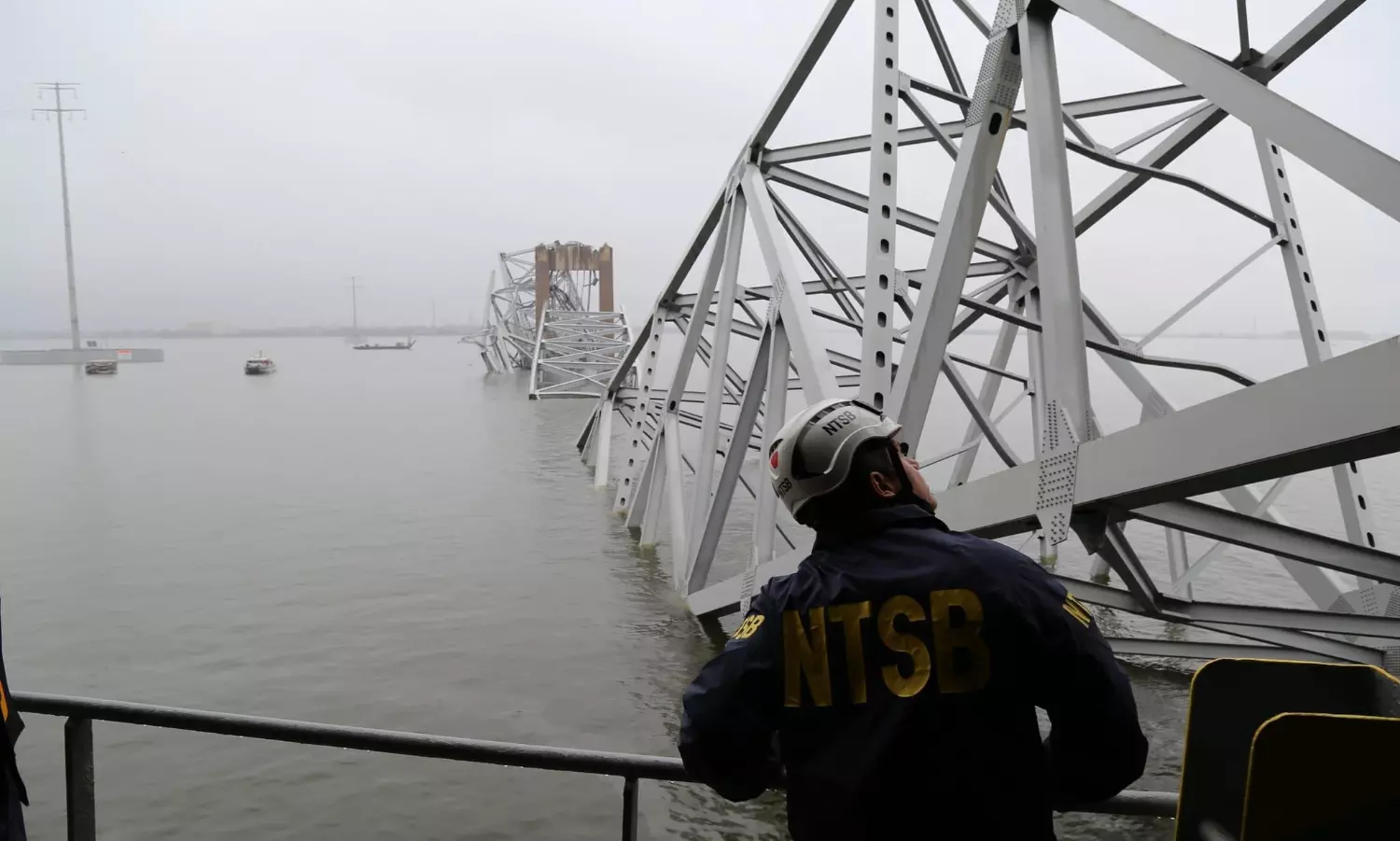Baltimore bridge collapse: Challenges ahead for US East Coast ports
No pollution reported; initial damage estimates to vessel and bridge exceed $500,000, says NTSB

Photo Credit: NTSB
Handling diverted Baltimore container cargo as well as the anticipated market growth in 2024 may prove challenging for U.S. East Coast ports, many of which are already at reasonably high utilisation levels, according to the latest update from Drewry.
"On March 26, 2024 at 1:28am, MV DALI, a 10,000 TEU containership, collided with one of the support columns of the Francis Scott Key bridge, which spans the Patapsco River between Baltimore and Dundalk. Within seconds of the impact, the main spans of the bridge collapsed into the river, blocking maritime access to the Port of Baltimore."
No pollution has been reported at this time. Initial damage estimates to the vessel and the bridge exceed $500,000, according to the latest update by the National Transportation Safety Board (NTSB), an independent U.S. government investigative agency responsible for civil transportation accident investigations.
"This accident was classified by the US Coast Guard as a major marine casualty. NTSB will lead the investigation, and the Office of Marine Safety will investigate and establish the probable cause."
The largest crane on the eastern U.S. seaboard has arrived in Baltimore as part of a massive clean-up effort, BBC reported. "Some $60 million in federal emergency funds will go towards recovery efforts."
DALI - which is nearly as long as the Eiffel tower - remains on the water. Its 22-person crew, all Indian nationals, are reportedly still aboard, the report added.
Baltimore busiest port for cars & light trucks
The Port of Baltimore is the busiest in the U.S. for cars & light trucks, handling nearly 850,000 units in 2023, more than any other U.S. port for the 13th consecutive year, the update added. "In the same year, the port also handled just under half a million passengers, 11.7 million tonnes of general cargo and 1.1 mteu of containers."
Maryland Governor Wes Moore declared a state of emergency and suspended all shipping to or from the Port of Baltimore until further notice. The cargo will naturally divert to the most appropriate neighbouring ports, ranging from the Hampton Roads ports in the south to New York/New Jersey ports in the north, the update added.
"For container traffic, the primary gateway in the northern half of the U.S. East Coast is New York/New Jersey with 59 percent of the throughput. The Hampton Roads terminals (primarily Norfolk International Terminal and Virginia International Gateway) handle 25 percent with Baltimore at nine percent, Philadelphia at six percent and the remainder in Boston, Wilmington (Delaware) and other smaller terminals."
FY2023 Container volumes and capacity shares in US East Coast, northern range
Source: Drewry
In 2023, total terminal utilisation for the area is estimated to have been 60 percent, following a 13.2 percent YoY decrease in overall container volumes and a 5.5 percent increase in terminal capacity. Notably, most of the capacity increase was at Baltimore’s Seagirt Marine Terminal, which added 800,000teu in the year, the update added.
Stress ahead
Average pre-berthing waiting times are an indicator of overall terminal congestion, and data suggests that supply chains in this market are likely to come under strain in the coming months.
"Even with the additional capacity and reduced volumes during 2023, waiting times in Baltimore and New York ports have only very recently come under control, dropping to 0.2 days on average in February 2024. In the Hampton Roads terminals, which were dealing with the highest utilisation in the area in 2023, they remain elevated at 0.5 day."


